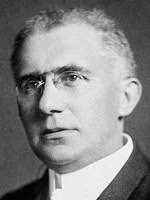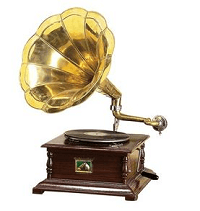Who Invented Gramophone
The gramophone is a record playing machine. It was invented by Emile Berliner. The gramophone was made by innovating ideas in the present record playing device, which was a phonograph. Emile is known to have transformed the way people listen to music. He did so by changing the conventional tin foils to the flat disc that runs the gramophone. History of GramophoneThe beginning of the era of playing music and recording started in 1877 with Thomas A. Edison's phonograph invention. A phonograph is a record-playing machine that can record and replay sound. Although it served the purpose, it had some limitations like the sound quality and could record only once. After the invention of the phonograph, many inventors tried innovating ways to replace the tin foils. They aimed to make a much reliable record-playing machine, but neither of them succeeded. However, people started using phonograph that had popular music which was already recorded. Moreover, Bell and Tainter were with Edison in the contest of designing better music playing devices. Bell and Tainter's graphophones also entered the market. Emile Berliner started his research on the advantages and drawbacks of the phonograph and the graphophone. He found that although the wax cylinder was a great accomplishment, it was not durable enough to have a permanent recording. For the constant skidding of the stylus, deeper grooves than that on the vertical cut where required. Moreover, mass production of the wax cylinder was not feasible. Hence it was certain that a more advanced machine was necessary for recording sound. The invention of the Berliner's Gramophone
Emile started experimenting with the gramophone. While he was performing trials and errors, he was certain that a disc could replace the wax cylinders. The idea of using a disc to replace the wax cylinder was generated from a phonautograph developed by Leon Scott. Emile began developing a phonautograph, and he tried photoengraving to replicate the tracing on a rigid surface. While doing so, he found that of many materials, zinc was best suitable. Emile then found a way to coat the zinc discs and fine lines on the disc using the stylus. The sound was reproduced with the stylus, and the zinc disc could be mounted on the turntables. Emile then received a patent for his gramophone in 1887. However, he continuously went on patenting advancements in the gramophone. Working of the First GramophoneThe first gramophone wasn't as advanced as the gramophones today. A small needle was attached to the groove and the diaphragm. Further, the diaphragm is attached to the horn. Because of vibrations from the diaphragm, the recorded sound can be accessed, and sound is produced. The Evolution of the GramophoneOver the years, there have been many changes in the gramophone. These include changes in the material to the aesthetics of the gramophone. Following are some of the important years in which gramophones were in demand: 1877 Charles Cros wrote a paper that elaborated on the record playing device but never performed any practical experiments. 1887 Thomas A. Edison developed a phonograph and presented a wax cylinder phonograph at an exhibition in 1889. 1897 Emile designed the first gramophone with the disc mounted on the turntables. 1907 Discs became more popular for recording. These had lower prices; hence the demand for discs increased. 1947 The carbon-based material of the disc replaced the vinyl acetate disc. Present Today, gramophones are replaced by much-advanced technologies. The conventional turntables are also replaced by the modern disc-trays which are popularly used in laptops and computers. These include CDs, DVDs, etc. The popularity of the GramophonesAfter its invention in 1887, gramophones gained popularity in the 1890s. It was so popular that in some countries, people even paid for listening to the music playlists. Later, Berliner was awarded a patent, and gramophones were exclusively sold. Hollywood relied on the gramophones for the sound effects in the movies in 1899. It was during this time that Berliner's Company was the first to record songs and recorded many hit songs. Impact of Gramophone on the Lives of PeopleGramophones generated interest in music in people as they provided a collection of music pre-recorded for anyone to play. The invention of the gramophone impacted lives, as music is essential on many occasions. The gramophone was one of the many revolutionary machines that helped the music industry flourish. It paved the way to new career paths like music artist and lyricist with the addition of lyrics to the music. Additionally, it marked the beginning of many music-related creative professions.
Next TopicWho Invented Pen
|
 For Videos Join Our Youtube Channel: Join Now
For Videos Join Our Youtube Channel: Join Now
Feedback
- Send your Feedback to [email protected]
Help Others, Please Share










